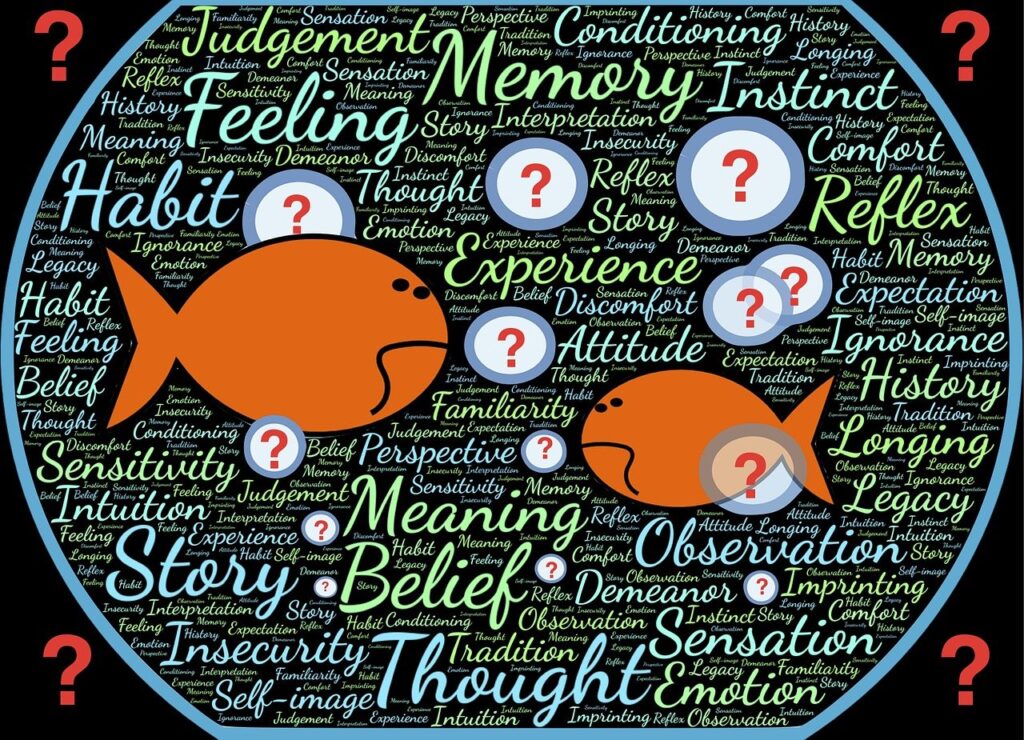(as taken from my Medium blog post)
How many sweeping statements have you heard or read about how to excel in leadership communication? Be authentic. Be transparent. Be clear, be empathetic, be visionary … the list goes on. But none of these tell you HOW to communicate well. In fact, those statements are about as helpful as telling you to just grow a third ear so you can listen better.
Know Your Intention
It all starts with why you want to communicate.
Do you want to convey information or knowledge? Or do you want to discover something?
Most people enter leadership communication with the desire to convey their information or to convince others to follow their way of thinking. It’s perfectly normal as it’s the psyche’s way of attempting to do a good job.
Nevertheless, consider trying to be authentic when you want to get the other person to follow your process and not theirs?
And remember that authentic leaders are self-aware and curious.
The simple intention of wanting someone to follow your process is the very opposite of being curious. Moreover, it will probably trigger frustration that most will not be aware of because they are focused on getting their point across.
As organisational anthropologist and communication expert Judith Glaser explains in the neuroscience of conversations, communication is much more than the words we speak.
Communication creates emotional, chemical and physical changes in our brains and bodies. As such, others sense the difference when we want to convince them to change to our views versus trying to discover something new with them.
The philosopher Martin Buber called it the I-It versus I-thou encounter. In other words, are you meeting the other person with the intention to “establish a living mutual relation”?
Alternatively, are you meeting the other person as an object to meet your needs? Within the pressures of leadership and communication, those needs are typically the need to be right, to be fast and to control. In other words, many fall into the transactional.
Moreover, our psyches impact our leadership communication. It isn’t easy to shift away from transactional towards a communication dynamic of curiosity and co-creation. To do that, you need to work with the ego.
Collaborate with the ego to remove leadership communication blocks:
- Challenge your assumptions. Leveraging inclusive communication means asking questions to counteract your assumptions. So, you think someone made a mistake but what circumstances and information led them to that mistake? What can you discover together about both your assumptions to improve the process next time?
- Let go of being right. Effective leadership communication means letting go of being right and taking a learning mindset. What can you learn about the other person’s challenges, viewpoints and fears? The more curious you are, the more they open up and the more you connect through common ground.
- Explore your triggers. The largest block to successful communication and collaboration is our triggers and automatic reactions. In that mode, we tend to shut down our logical and empathic parts of the brain because we are stuck in a form of fight-or-flight. Something in the situation has triggered a painful memory and we simply need to protect ourselves. Get to know those moments, often with a leadership coach, and you’ll gradually manage those out of your behavioural dashboard.
Collaborate with the Context
You can have all the techniques in the world but if your intention is misaligned, your communication will also miss the goal. In short, you’ll be operating as if sitting isolated on a faraway island.
Or as Rudyard Kipling wrote far more succinctly in the Light that Failed, “we’re all islands shouting lies to each other across a sea of misunderstanding”.
Perhaps paradoxically, you have to lose your goal to gain a new goal. The aim is to let go of your intention that revolves around “me, myself and I” in order to discover a new goal based on mutual relations or co-creation.
Another way of thinking about it is that none of us can operate in isolation. We need to appreciate the context of the communication.
The challenge with context is that it needs adaptive leadership communication. Whilst there are frameworks to support communication and collaboration, as detailed in the next section, the art of leadership communication is to adapt according to what both the situation and the other person need.

Such adaptive leadership communication skills need exceptional emotional intelligence. But within that, context is often forgotten.
A study on the relational view of leadership development not only summarises how much today’s leadership development is failing but also that it is often viewed as something with clear cut answers.
There is no “one-size-fits-all” to effective communication for leaders. And simply stating that leaders need to be authentic, transparent and vulnerable sounds good on paper but it doesn’t shift the core mindset.
So, what is this new mindset and how does it fit with context?
Judith Glaser calls it transformational and co-creative. Martin Huber calls it mutual relation and recent leadership theories call it collective or shared and relational leadership.
The psyche likes to have us believe that we are all separate entities in competition and in some ways, that’s true. Nevertheless, effective communication for leaders demands that we see each other in collaboration, as one.
So, together, we agree goals and align our needs. Similarly for successful leadership communication, leaders and individuals consider the whole context.
That includes reflecting on the team, organisational culture and different personal networks. Not just our personal traits and characteristics.
- Sensemaking. The ability to “articulate the unknown … to springboard into action” is increasingly vital in today’s complex and uncertain world. By creating a map of the context, including the unknown, into an understandable guide, leaders engender motivation, confidence and collaboration. As the paper explains, you need to explore multiple viewpoints. You also need to let go of stereotypes, provide new stories and metaphors and experiment. One powerful way to jumpstart this process is to live abroad.
- Perspectives. Exploring varied viewpoints also engages people. By being asked open and curious questions, people feel heard and valued. Moreover, they then feel that their input has contributed to the whole. So, get curious about those around you. Discover how their position, experiences, background, etc, contribute to their realities and potential solutions.
- Name the elephant. Leadership communication is as much about managing tensions as it is about creating positive vibes. If conflict and problems are locked up in a cupboard, people draw their own conclusions, often the wrong ones. That includes if questions are side-stepped. Instead of dancing around the elephant, bring it out and describe it. Use it to make sense of the unknown currently operating. Are you dealing with a snake, a fan, a tree or simply a trunk, ear and leg?
Embrace those Emotions
Metaphors, stories, the implicit, empathy… in short, everything that makes leadership communication successful are traits that many are losing in today’s instant, technology-focused world.
According to Ian McGilchrist in his book The Master and His Emissary, we are increasingly favouring a left-hemisphere view of the world. As a result, people search for precise answers where intuition cannot and should not be categorised, as in communication.
Personally, I have also seen many coachees come to me asking for a process for leadership communication. It’s almost as if they want a formula list to follow and that’s it, job done.
To do leadership and communication successfully though, we must all learn to reconnect with our emotions and bodies. Essentially, if we can’t sense how we experience emotional sensations in the body, how can we interpret them correctly with our minds? And most importantly, how can then hope to understand them in other people?
For example, feeling frustrated, resentful or indignant all fall under anger but each one is subtly different and demands a unique approach.
Admittedly, there’s a huge debate in the world of psychologists and neuroscientists as to where emotions come from. Again though, perhaps there is no clear formula and the body-brain connection is so intricately intertwined that there is no beginning or end.
Either way, to master leadership communication skills, we cannot ignore emotions. Neuroscientist Antonio Damasio showed us that emotions are part of every decision we make, whether we like it or not. So, the more we connect with our emotions, the more we can influence our decisions rather than be driven by those emotions.

Get to know your emotions…
Damasio’s Somatic Marker Hypothesis where a somatic marker, or emotional response, can serve as a guide is still being studied and built upon. Today’s research further shows that even our memories can be altered through our bodies, again demonstrating the body-mind connection.
In other words, let’s stop walking around as if we were floating heads. Instead, let’s balance out our cognitive methods with a more somatic affective approach.
As a result, we reduce our reactivity, become more open to others’ viewpoints and more skilled in engaging them in co-creation. Leadership communication and collaboration will then flow naturally.
… to be in control of your decisions and communication approach
As you can imagine, the work takes time and patience. Everyone can do it though with some simple starting points, inspired by the difficult conversations framework from the Harvard Negotiating team:
- Triggers. When we are stressed or tired, we are more likely to be triggered into assuming we are right and they are wrong. Of course, we can note and talk or write about those triggers. You can also explore them with a coach where in the body those related emotions occur. The more you can map your emotions in the body, the more easily you can process them and eventually, let them go.
- Feelings. The unspoken aspect of difficult conversations is what everyone is feeling. We can’t cut off our emotions. Even if we think we are being logical, the subconscious is still busy interpreting our emotions and creating feelings and stories to keep feeding those feelings. Of course, you don’t have to go into “dear diary moments”. Simply stating you are feeling frustrated or let down can go a long way in paving the road to inclusive communication.
- Identity. When we go deeper into what’s behind leadership communication we discover that we all have a self-image to protect. As the Harvard Negotiating team discovered from their research, everyone wants to be seen as competent, a good person and as lovable or deserving of kindness. The art of communication is to ensure that all those aspects in the other person are respected and upheld despite any mistakes that might have happened.
How Will You Work on Your Leadership Communication Approach?
The world is ambiguous. The first step to improving your leadership communication is to appreciate that communication is also ambiguous. Yes, you can use a list of open questions to reduce defensiveness and increase curiosity. Nevertheless, you still need to adapt to the context.
Most importantly, you need to work with your ego to shift your intentions to include the other person’s needs. You can only truly do that if you get to know your emotions, triggers and what type of self-image you need to protect.
Once we know our emotions and triggers, the shift away from defending our viewpoint happens naturally. We can then embrace deep curiosity about the other person’s reality to co-create through common ground.
Or as Martin Buber once said, “the world is not comprehensible, but it is embraceable: through the embracing of one of its beings”.

